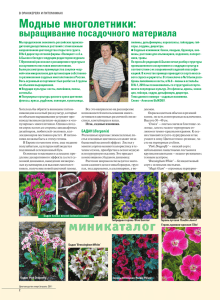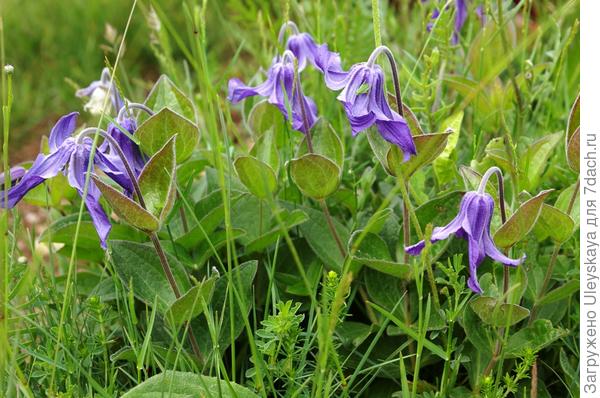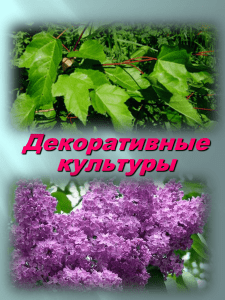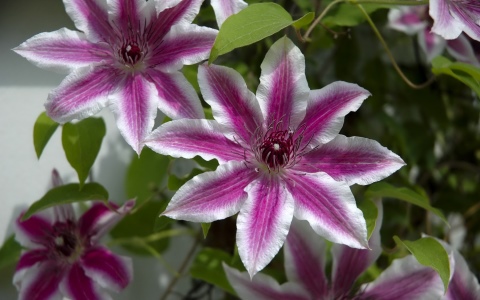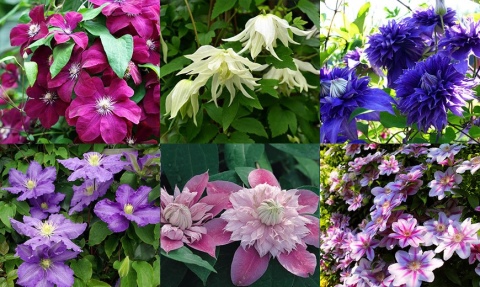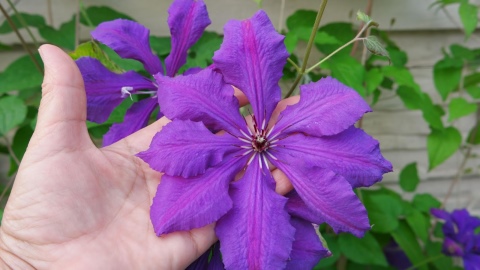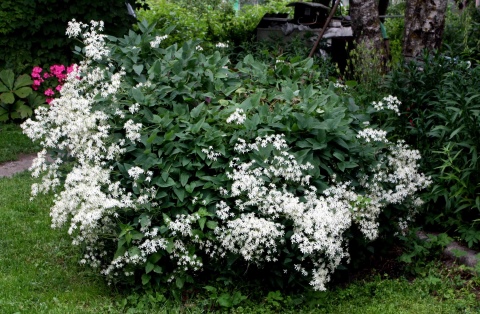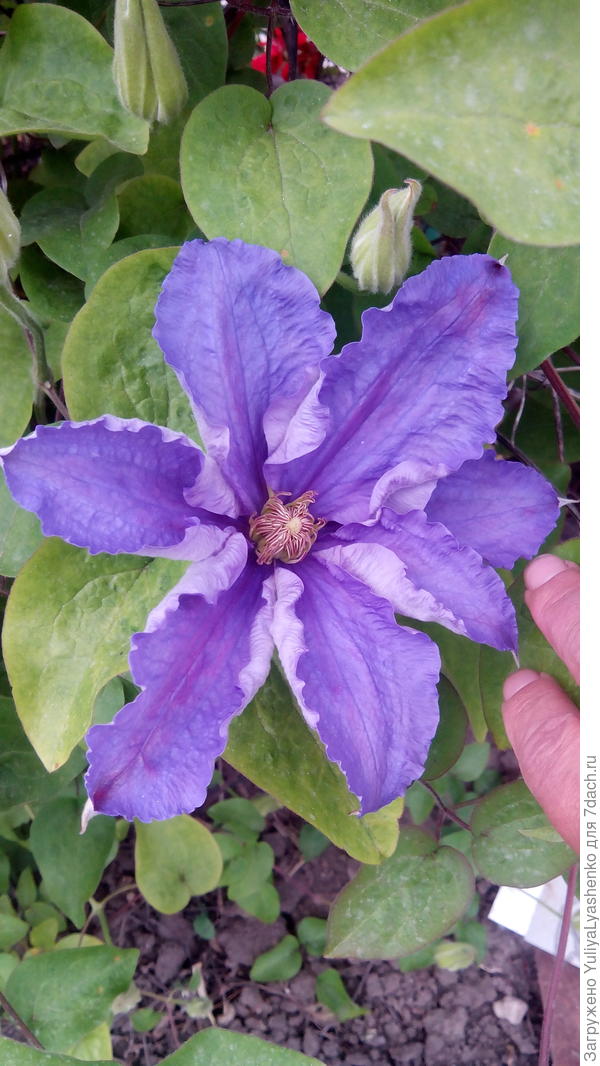Planting and leaving
Planting work is usually carried out in early spring or autumn, the specific choice of time will depend on the climate in the growing region, that is, in warm areas, the plant is planted in autumn, and in cold spring.
The place chosen for clematis should be sunny, but at the same time protected from sunlight. The absence of drafts and the deep location of groundwater are also encouraged.
The soil should be light, loose, slightly alkaline or acidic. Before planting for digging, add:
- 2 buckets of humus;
- 1 bucket of peat;
- 150 grams of superphosphate;
- 300 grams of ash.
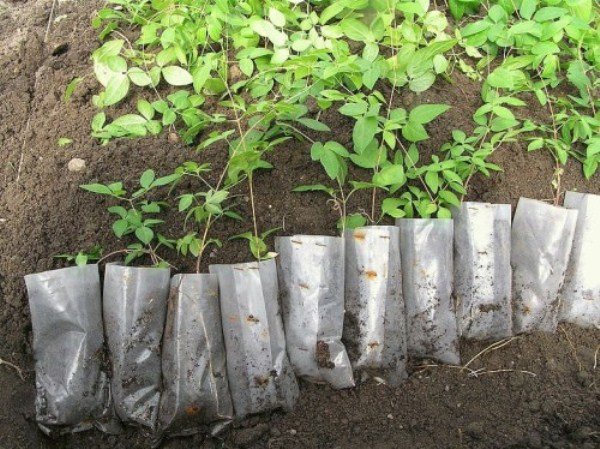
Seedlings of Scorching Clematis Before planting, the seedling must be prepared, namely, cut off the entire aerial part to 1 bud. Further work on planting a plant will look like this:
- To begin with, dig a hole, the depth and width of which will be 60 centimeters;
- Immediately a support is installed on the bottom, and then a drainage layer is poured, which can be crushed stone or gravel;
- A slide from the soil is laid on the drainage, and a seedling is placed on it and the roots are gently straightened for it, after which they are buried.
An interesting feature of clematis sediment will be that the hole is not buried completely, leaving about 10 centimeters free.
Immediately after planting, the near-stem circle of the plant is abundantly watered and mulched.
Clematis care
Clematis pungent is a very moisture-loving plant, so it should be watered at least 1 time a week, and on hot days, increase this amount up to 2-3 times. When watering the plant, it is imperative to ensure that moisture does not get on the green part, because in this case, the plant may wilt.
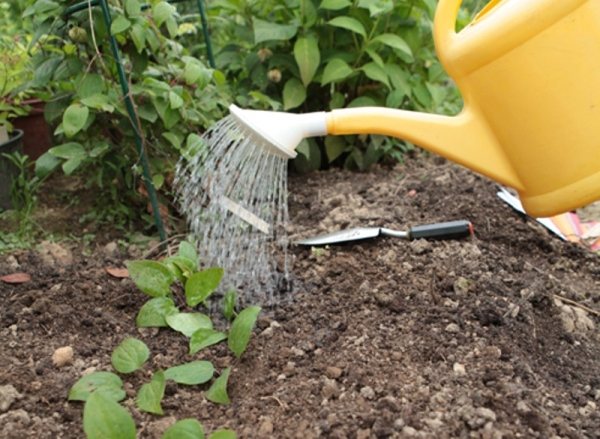
Watering is desirable at the root, affecting the aerial part of Clematis as little as possible
Several times a month, together with watering, the soil is loosened, cleaned of weeds and mulched with peat, sawdust or leaves. Regular carrying out of such work will slow down the evaporation of moisture from the soil, and the topsoil will always be in a moist state.
Also, an excess of moisture acts on the plant in a destructive way, therefore, during heavy rains, it is recommended to sprinkle the ground around clematis with wood ash.
In order for the growth of the shrub to be abundant, and the vines to look healthy and bloom well, they must be fed regularly. For this, during the active period, mineral and organic fertilizers are alternately applied every 3 weeks. Experienced gardeners recommend feeding together with watering.
During the flowering period, clematis is not fertilized, because in this case it will begin to gain green mass to the detriment of flowering.
In the fall, after the liana has bloomed, phosphorus-potassium fertilizers are applied to the root zone.
Clematis pungent is a vine that needs support. For such purposes, you can use arches, gazebos, a wall of a house, a fence, etc.
Pruning a plant consists of several steps:
- To extend the flowering period in the spring, cut off individual lateral shoots;
- In summer, young shoots must be pinched;
- Before the onset of winter, the aerial part of clematis is completely cut off, because it dies off.
Caring for clematis is a simple process that every gardener can do, the main thing is to adhere to these rules.
Description of Clematis Arabella
A characteristic feature of Clematis Arabella is that it does not know how to cling to supports, like most representatives of this genus of plants. The variety belongs to the Intergrifolia group, which means "whole-leaved".Clematis Arabella leaves are whole, oval, dark green, leathery, slightly pubescent and wavy edges.
Since this vine is unable to cling to vertical supports on its own, it must be tied up, therefore, in gardens it is often used as a ground cover plant. When grown vertically, clematis shoots can reach a height of 2-2.5 m, and if you give them the opportunity to creep along the ground, they grow up to 3 m.If you provide this perennial with support and tie up the growing branches in time, the bush will form a neat crown in the form hemisphere. Clematis Arabella belongs to the third pruning group.
Clematis rhizome is well developed, which allows the plant to firmly anchor in the ground.
The Arabella variety has good frost resistance and winters well at -30 degrees under light cover, which allows it to be grown throughout Russia, except for the northern regions. This vine also tolerates short periods of drought without loss, and is resistant to diseases and pests.
Clematis Arabella is unpretentious, when grown in the garden does not require much effort. It grows well in any soil, provided it has good drainage and sufficient nutrients. It prefers to grow in well-lit areas, but clematis will also be comfortable in partial shade.

Flowering features
The main decorative value of Arabella botanical clematis lies in its flowering. The plant blooms continuously from June to September-October. The buds are tied only on fresh shoots of the current year and during the flowering period they cover the shoots in bulk, practically hiding the dense green growth.
Each flower consists of 4-8 oval oblong petals, which at the beginning of flowering have a bright purple color, and then turn pale blue. The diameter of the flower is about 7-9 cm. The anther stamens are creamy, and when the buds are fully opened, they become yellowish.
After a heavy rain, the clematis bush may decay and lose its neat appearance, but after a while new flower buds begin to form, from which fresh flowers will bloom.
Trimming group
Botanical Clematis Arabella belongs to the group of pruning number 3. This means that the shoots of the plant must be cut off almost completely, leaving only short stumps 15-20 cm from the soil surface with 2-3 buds. The bushes are trimmed in the fall after flowering, during the preparation of the vines for wintering. Saplings planted in the spring on the site are also shortened to 2-3 buds.
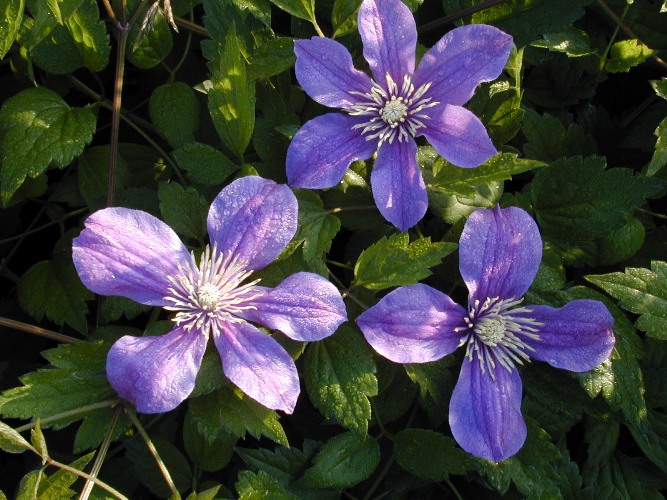
Such a short pruning is due to the fact that flower buds are tied only on the shoots of the current year, and the old and last year's shoots remain without flowers and only thicken the crown, actively increasing the green mass.
Application in design
In garden design, Clematis Arabella can be used as a ground cover plant or for vertical landscaping. You can decorate beautiful flowering clumps by planting a plant in a mixborder, or decorate the bases of walls and hedges. And if you tie up long lashes to the support, then it can be allowed to curl along the rocky walls, columns. In vertical gardening, Clematis Arabella can be used to decorate arches, pergolas, gazebos, decorate the entrance to the house or to the veranda.
In landscape design, this plant can be used to decorate an alpine slide, rockery, flower beds. Clematis Arabella will be a great addition to roses and coniferous shrubs. This variety gets along especially well with climbing roses. It can be planted alongside other perennials with a short flowering period, and then clematis will decorate them with its flowers throughout the season.
Clematis Arabella is perfect for decorating balconies, loggias and terraces. It can be planted in wide containers, flowerpots or hanging baskets, and grown as an ampelous plant.
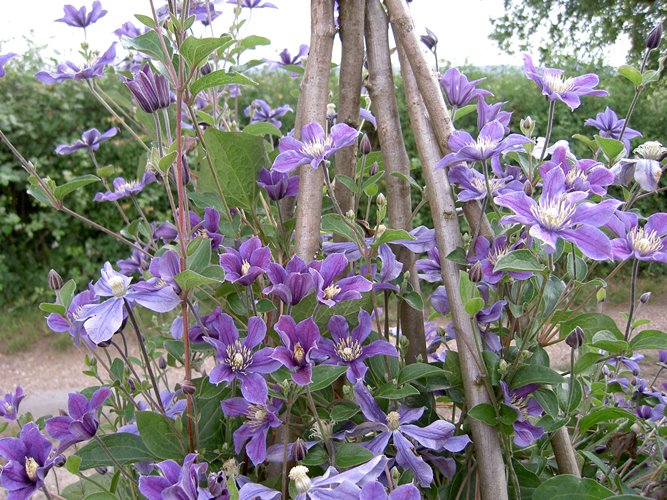
To choose neighbors or decide on the color scheme of the flower garden, you can see a photo of Clematis Arabella and be inspired by the design of plots using this plant.
general information
The small-flowered group of clematis is preferable to breeding, not only because it is unpretentious and looks beautiful
It is very important that most varieties are frost-resistant and grow well in different regions of Russia. Another advantage is that flowering occurs on those shoots that have formed in a given year, so pruning is not difficult
Externally, clematis is a climbing plant, with abundant flowering of various sizes.
Small flowering can have a different shape and shade, depending on the variety. Leaves can be light or dark. There are also species with erect stems.
Clematis are classified into different groups. The assignment to one or another of them occurs by assessing different parameters:
- height;
- flowering type;
- color spectrum;
- breeding type.
Each group has its own characteristics that should be considered before purchasing clematis. Breeders distinguish the following groups:
"Atrezhen";
"Heraclifolia";
"Intergrifolia";
"Tangutika";
"Texensis";
Viticella.

